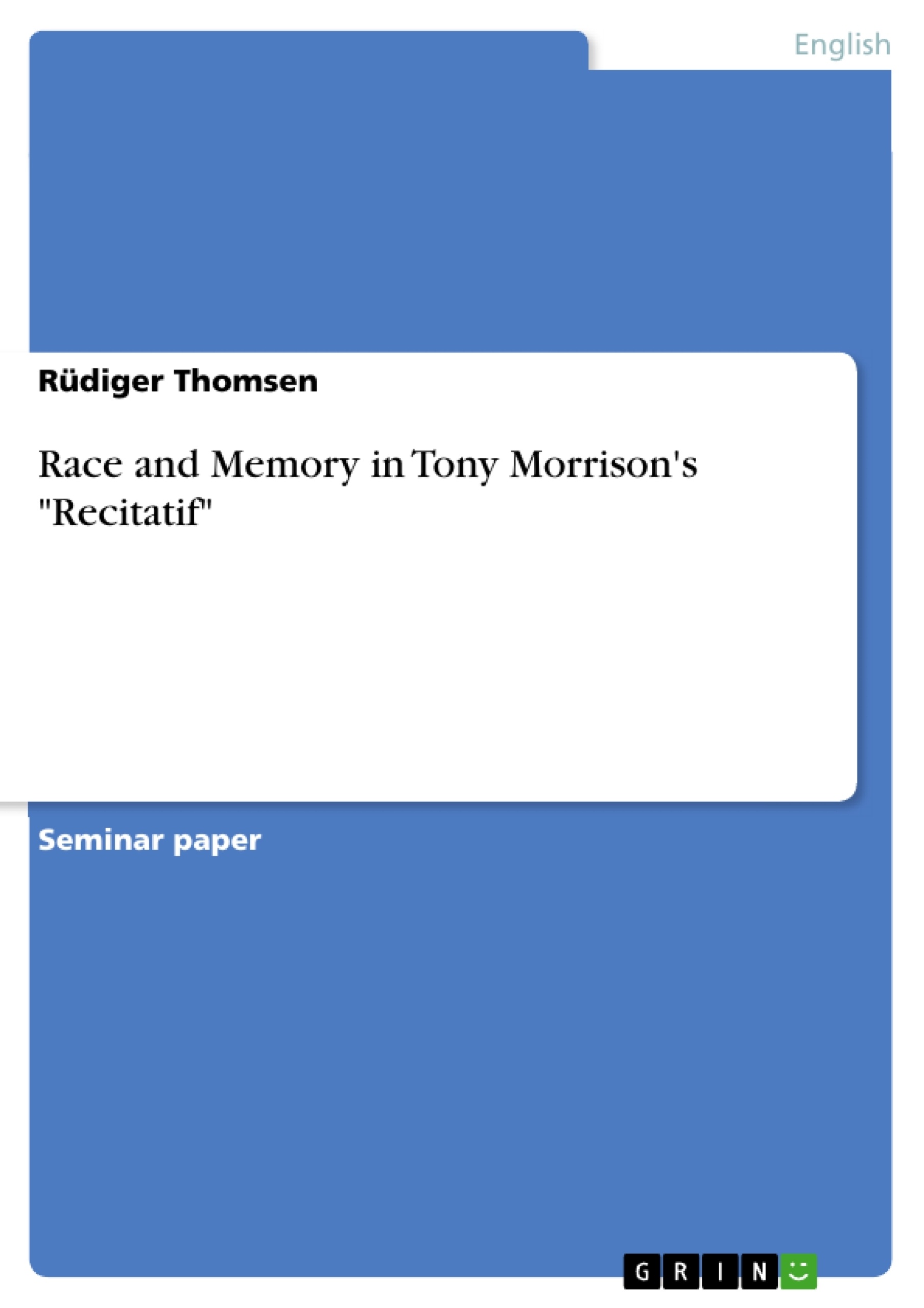Against the standard focus on the questions of race in Tony Morrison's "Recitatif", this paper analyses how the short story features the four levels of memory as defined by Aleida Assmann: individual, social, political, and cultural. African American author Toni Morrison mentions memory as a central theme of her work. While Morrison's novels have been approached from this angle, her only short story "Recitatif" has mostly been read as a comment on race relations and stereotypes. This paper shifts focus from race towards individual and collective memory as vital elements of this story. Still, the issue of race can be integrated in the larger concept of collective memory.
Table of contents
1 Introduction
2 Theoretical Framework
2.1 Individual versus Collective Memory
2.2 Four Formats of Memory: Individual, Social, Political, Cultural
2.3 Memory in the work of Toni Morrison
3 Text Analysis
3.1 Individual Memory in “Recitatif”: Mothers and, “What the hell happened to Maggie?”
3.2 Social Memory in “Recitatif”: James, Joseph and “Jimi Hendrix, asshole.”
3.3 Political Memory in “Recitatif”: The Big Bozo and “The Brady Bunch”
3.4 Cultural Memory in “Recitatif”: Race and Reader's Response
3.5 Memories Meet: The Title “Recitatif“
4 Conclusion
5 Bibliography
- Quote paper
- Rüdiger Thomsen (Author), 2014, Race and Memory in Tony Morrison's "Recitatif", Munich, GRIN Verlag, https://www.grin.com/document/1153718
-

-

-

-
Upload your own papers! Earn money and win an iPhone X. -

-
Upload your own papers! Earn money and win an iPhone X. -

-
Upload your own papers! Earn money and win an iPhone X. -

-
Upload your own papers! Earn money and win an iPhone X. -

-
Upload your own papers! Earn money and win an iPhone X. -

-
Upload your own papers! Earn money and win an iPhone X. -

-
Upload your own papers! Earn money and win an iPhone X.

